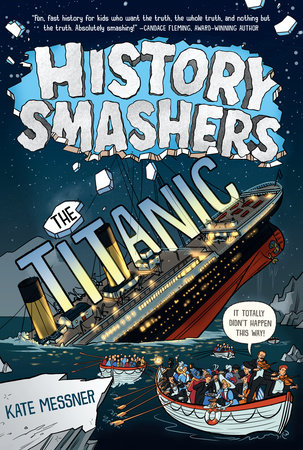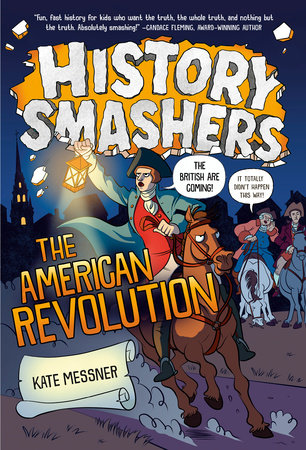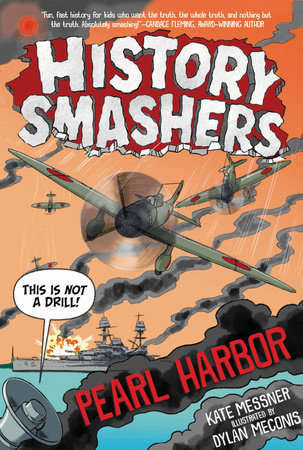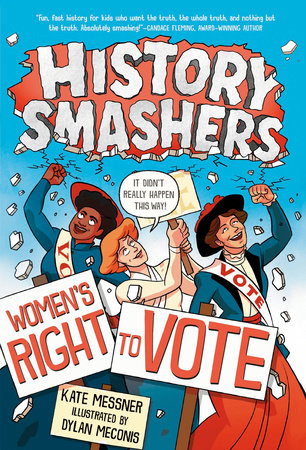

My amazing 2017 Debuts author pal Jake Burt has recently released his fifth novel (!!!), but this is his FIRST time chatting with us on the Mixed-Up Files!!! Can you tell how excited that makes me? Well, CAN YOU…? 🙂
Before I turn the mic over to the mega-talented Jake Burt (besides being an author, Jake is a fifth-grade teacher, an Ultimate Frisbee champ, and a gifted banjo player), here’s a short summary of his latest MG novel, The Ghoul of Windydown Vale (Feiwel and Friends).
(Oh, and don’t miss the chance to win TWO signed copies of Jake’s books–GHOUL and Cleo Porter and the Body Electric–if you enter the giveaway. Scroll down for details! 
The Ghoul of Windydown Vale

Copper Inskeep holds Windydown Vale’s deepest and darkest secret: He is the ghoul that haunts the Vale, donning a gruesome costume to scare travelers and townsfolk away from the dangers of the surrounding swamps. When a terrified girl claims she and her father were attacked by a creature—one that could not have been Copper—it threatens not just Copper’s secret, but the fate of all Windydown.
Without further ado… heeeeere’s Jake!
Interview with Jake Burt

MR: Welcome to the Mixed-Up Files, my friend!
JB: Thank you, Melissa! My pleasure to (finally) be here!
MR: Your latest book, The Ghoul of Windydown Vale, has been described as “scarier than Scooby-Doo, but not too scary to read [to kids] at night.” What is the secret to writing a spooky book for middle-grade readers? Is there anything specific you aimed for—or avoided—during the writing of this novel?
JB: To me, the best spooky stuff is that which is unknown. I’ve never been a big fan of slasher horror, for instance: if you know from the first scene or chapter that the menace is a guy with a chainsaw, then the rest of the movie/book is just about seeing what inventive/gruesome ways said guy can terrorize people with a chainsaw. But a creeping, unseen dread? That, to me, is compelling and chilling in all the best ways. It’s particularly effective for middle grade novels, too, since ideally, we’re trying to avoid subjecting young readers to Friday the 13th-level bloodshed. I elected to go with first person present as my narrative style, too, because I wanted the reader to have that close, closed experience of navigating the spooky things right alongside my main character.
Windydown Vale and its (Vaguely) Pioneer Past


MR: Windydown Vale is set in an unspecified historical era, in an unspecified geographical location. What was the inspiration behind these fictional choices? Was it meant to reflect the secret behind the Ghoul’s true identity? Or maybe something else…?
JB: By keeping the location very local, and by locking the setting into a nebulous, vaguely pioneer past, my goal was to “trap” the reader. You don’t know what else is out there, except that Windydown Vale is surrounded in the immediate sense by deadly swamps. Better to stay in town than to risk a journey elsewhere, no? And an ahistorical time period lends itself to the tone of the book. Even if ghouls aren’t real, our characters don’t have the technology to prove it. I wanted the lore of the book to sit solidly in a temporal framework where legends and monsters are part of the science, since scary things are much more fun when everyone believes in them.
Cleo Porter and the Body Electric + a Global Pandemic

MR: Your previous novel, Cleo Porter and the Body Electric, takes place in the aftermath of a fictional pandemic—“influenza D.” Cleo Porter, the 12-year-old protagonist, experiences life from the confines of her germ-free apartment, takes classes via Virtual Adaptive Instructional Network, and enjoys computer-simulated playdates with her friends. Interestingly, this book was written a year before the appearance of Covid-19. You’re an amazing guy, Jake, but I know you’re not psychic. How on earth did you come up with this idea? Also, what was it like to have a book come out during a global pandemic—about a global pandemic?
JB: Having Cleo launch in the midst of COVID was surreal, to say the least. I was certainly worried that it would be a “too soon” situation, but reception of the book has been universally positive. Part of the reason, I think, is that the book doesn’t actually center on the pandemic; it’s about the long-term aftermath. Still, many of the themes (isolation, compassion, the value of science) are relevant. Teachers and librarians have reported finding Cleo to be a compelling resource for book groups and classroom discussions, and I’m honored that it has served that purpose, in addition to being a fast-paced, twisty adventure. Part of the reason it rings so true is that it’s based on my experience during a real pandemic–not COVID, but SARS, back in 2013. I lived in China at the time, and we went into full lockdown as the country sought to manage the spread. It was upon that time that I based Cleo’s setting.
Reviews and Feedback

MR: As a follow-up, Jake, what kind of feedback did you receive from readers following the publication of Cleo Porter? I’m guessing kids found solace in Cleo’s plight, considering that many of them were in similar circumstances. Did any of the feedback surprise you—from kids or reviewers?
JB: I was pleasantly surprised by the reception; it was certainly nerve-wracking waiting for reviews to come in! To be honest, the biggest surprise came from the New York Times. I didn’t expect them to review it, much less do so in such a positive way. It was definitely a career milestone. (To read the Times’ glowing review of Cleo Porter and the Body Electric click here.)
The Tornado + Bullying

MR: To switch gears, your 2019 novel, The Tornado (2019), focuses on two characters who are the victims of bullying but handle it in vastly different ways. Bell Kirby hides from his tormenter while Daelynn Gower—a new girl with outrageous clothes and rainbow-colored hair—confronts the perpetrators head-on. Not to stir up unpleasant memories, but were you bullied as a child? If so, how did you handle it? Also, what advice would you give to fellow educators who confront bullying in their classrooms?
JB: Heavy questions, Melissa! And important ones. Yes, I was bullied. Parker Hellickson, the bully in Tornado, is based on the guy who bullied me throughout elementary school. Everything Parker inflicts on Bell is something my bully did to me. How did I handle it? Not well. I wilted. Thus, when I saw him bullying other kids, I didn’t say a word. I hid, and in some cases, I even laughed along with my “Parker,” hoping that by supporting him, I’d stay out of his crosshairs. It didn’t work, and it left others feeling as alone as I did. Tornado is, in part, a way to explore that bystander guilt.
My advice to educators, based on my own experiences and what I’ve seen in twenty-two years in the classroom, is to call a spade a spade. Don’t be afraid to label bullying behavior as such. “Bully” is a necessarily loaded term, but attempts to tiptoe around it or explain away bullying behaviors as simply “kidding around,” “accidental,” or “a one-time thing” subtly erode an educator’s ability to address the root causes of the behavior and to put measures in place to protect the victim. I’d also advise bringing in administrators and families as soon as possible to be part of the dialogue. A teacher shouldn’t have to handle something as serious as bullying in a vacuum, and multiple perspectives can be helpful in correctly diagnosing bullying as such.
The Right Hook of Devin Velma + Social Anxiety

MR: The Right Hook of Devin Velma (2018) features a character who suffers from social anxiety. As an example, Addison “freezes” when he’s feeling particularly anxious, or when he speaks to certain adults. He’s also majorly stressed about social media. What prompted you to write about social anxiety? What sort of research was involved?
JB: Addison’s anxiety was a way to explore my own, particularly around the topic of social media. When my first novel was published, one of the requests Macmillan made was that I jump onto Twitter, Facebook, Instagram, etc. to help spread the word. I was deeply unsure about how that would go, though it turns out that all my fears are shared by a considerable number of other authors on those platforms: I don’t have anything interesting to post; I will over-post and annoy people; I will seem like an egomaniac; I will bore people and turn them away from my books with my inane ‘netprattle. Fortunately, none of that has come to pass…or just as fortunately, I’ve made friends kindly enough not to embarrass me by telling me my online act has grown stale.
Of course, social media anxiety isn’t social anxiety disorder, and so I did need to do considerable research into how it manifests, how those who have it cope, and how therapists try to address the issue and help people live with it. Like with so many anxiety-based disorders, there is no one way people experience SAD, so I tried to make Addison’s journey as authentic to him as I could, while staying true to the narratives of folks with SAD writ large. For example, there is no quick fix; Addison doesn’t suddenly wake up one day “cured” of his anxiety. He manages it as best he can, enjoying the small victories where he can claim them, in the hopes that they will ultimately build to a life more comfortable to live.
Genius at Work

MR: Of all your five books, which was the hardest to write? The most fun…? Also, what about titles? Do you come up with them yourself?
JB: Hardest: The Ghoul of Windydown Vale. Genius that I am, I decided to try to write this one during the school year. All my others I manuscripted over the summer. Trying to balance writing and teaching was daunting, and likely something I won’t attempt again any time soon. The most fun to write was Cleo. Her pragmatism and overly literal way of looking at the world made her a tremendously entertaining character to shepherd through a sci-fi world. Plus, giant insectoid drone battles are a ton of fun to choreograph.
Carving Out Writing Time

MR: In addition to being a prolific novelist, you’re a fifth-grade teacher and parent to a young daughter. When do you find the time to write? Do you have a specific writing routine?
JB: I thought I had a routine, and then COVID hit, and then I tried to write during the school year, and then I didn’t have a great routine anymore. I think many of us are in the same boat, re-learning how to be creative and productive. When I’ve got all my ducks in a row, my writing arc goes something like this: Brainstorm, outline, and research in the spring (especially spring break). Begin manuscript writing in mid-June. Finish manuscript and revise through late July. Get manuscript to second readers at the start of August. Revise again. Send manuscript to agent at the end of August. Wait for feedback. Revise more throughout the fall, until my editor is ready to proceed with copyedits. Take care of those over winter break. Then the novel is pretty much out of my hands, and I can turn my attention to the next one.
The Pedaler

MR: Rumor has it that you write while pedaling an exercise bike. I can barely walk and chew gum at the same time! How on earth do you do this? Enquiring minds want to know.
JB: It’s true: I’m actually responding to these questions right now while on a bike. I’ve found that cycling (stationary, of course) helps settle my body and quiet my mind. If I simply sit, my legs get twitchy and I’m distracted. I should note, though, that I’m not on a Peloton or something of the sort. I ride what’s usually called an “exercise desk.” Imagine a bike with a desk surface where the handlebars should be, and you’ve pretty much got it.
Meet Jake’s Next Book Projects

MR: What are you working on now, Jake? Can you give us a teaser?
JB: Only the vaguest of teasers, but yes…in question form:
Q: “What do you call a kid with three wishes?”
A: “The single greatest threat to global security the world has ever seen.”
Lightning Round!

MR: One last thing. As you know, no MUF interview is complete without a lightning round, so…
Preferred writing snack?
Nothing. Sticky fingers + keyboard = disaster.
Coffee or tea?
TEA!
Dog or Cat?

(I think this photo speaks for itself. 🙂 — MR)
Favorite song you can play on the banjo?
“Wildwood Flower.”
Zombie apocalypse: Yea or nay?
As in “Would I survive?” Yea. Totally yea. I’m up-to-date on all my literature. As in “Do you want one?” Nay. Very nay.
Superpower?
I used to go with teleportation. Then I switched to telekinesis. Now it’s “the ability to craft the details of my own afterlife.”
Favorite place on Earth?

I do love me some Disney World…
Hidden talent (besides strumming the banjo, pedaling your desk bike, and playing Ultimate Frisbee)?
After twenty-two years of practice, I think I’m really, really good at reading middle-grade fiction aloud to an audience.
If you were stranded on a desert island with only three things, what would they be?
Teleportation, telekinesis, and the ability to craft the details of my own afterlife.
MR: Thanks for participating, Jake. And congrats on the publication of The Ghoul of Windydown Vale!
And now…
A GIVEAWAY!


For a chance to win TWO signed copies of Jake’s books, The Ghoul of Windydown Vale and Cleo Porter and the Body Electric, comment on the blog–and, if you’re on Twitter, on the Mixed-Up Files Twitter account, for an extra chance to win! (Giveaway ends 2/21/22 EST.) U.S. only, please.
All About Jake

Jake Burt is the author of the middle-grade novels Greetings from Witness Protection!, an Indie Next selection, The Right Hook of Devin Velma, a Junior Library Guild selection, and The Tornado, which School Library Journal called “one of the best stories about bullying for middle grades,” in a starred review. His novel Cleo Porter and the Body Electric was praised as a “thrilling sci-fi adventure” by #1 New York Times bestselling author Alan Gratz. His latest book, The Ghoul of Windydown Vale, is available now. Jake teaches fifth grade and lives in Hamden, CT, with his wife and their daughter. Learn more about Jake on his website and follow him on Instagram, Twitter and Facebook.


GHOUL Art by Larissa Brown Marantz
















 .
. 
